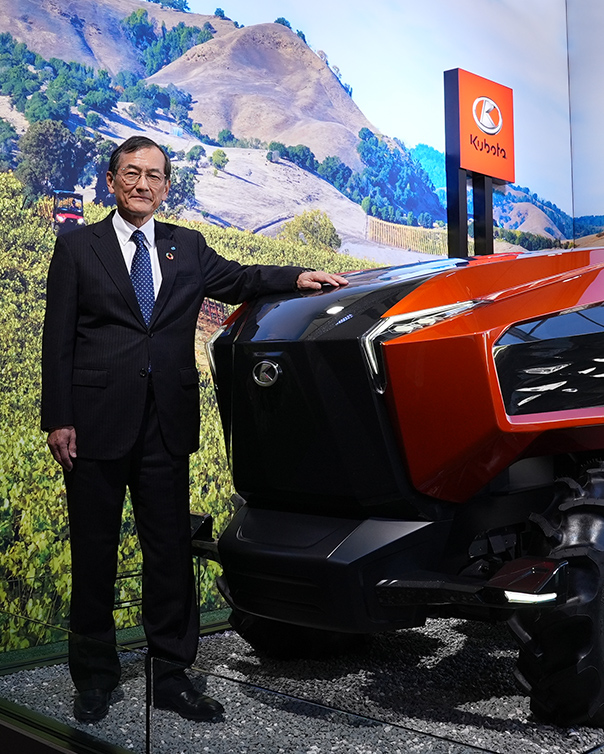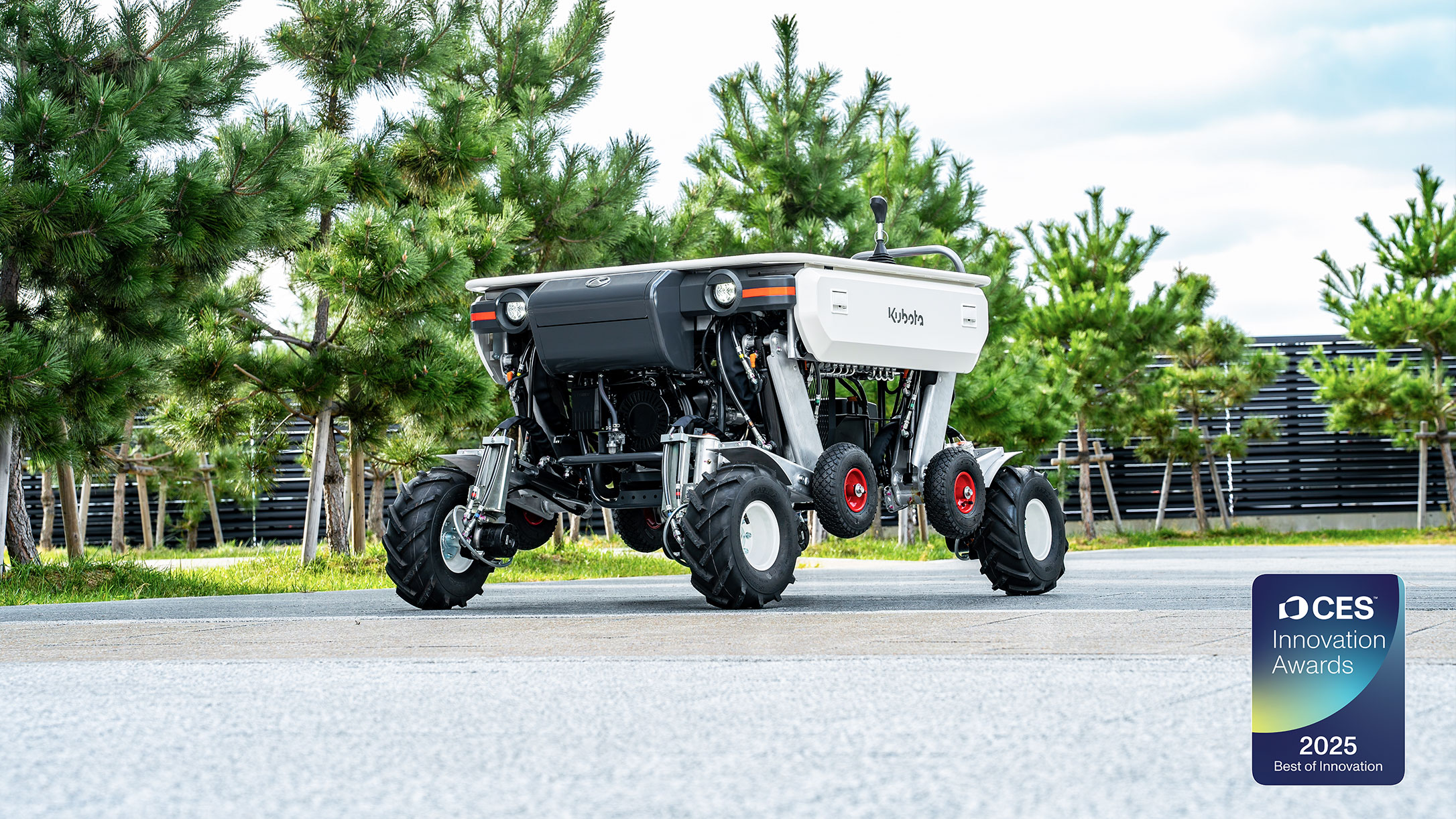
Kubota provides solutions using era-leading technologies to take on the challenges that farmers all over the world face. The company will once again showcase its products at the tech event CES® in January 2025.
At this year’s CES®, KATR, the four-wheeled solution from Kubota that assists with farming in hilly and mountainous areas, earned a “Best of Innovation” at the CES Innovation Awards® 2025, based on its functionality, design, and innovation.
What kind of solution is KATR? This article showcases the development background, features, and vision for KATR, which was developed with the goal of market launch ahead of its unveiling at CES®.
The Challenges of Agricultural Workforce and Labor Reduction in Hilly and Mountainous Areas
Throughout the world, numbers of agricultural workers are decreasing, and their population is aging. The impact of this trend is particularly felt in Japan, which has been among the first countries to face these agricultural challenges. For example, the number of fruit farmers has decreased from about 330,000 in 2000 to about 170,000 in 2020*1.
Many of these farmers work in hilly and mountainous areas, which are vital food production locations that account for about 38% of the total cultivated land area in Japan, about 45% of total farmers, and about 40% of agricultural output*2. However, much of the terrain in this region is sloped or uneven, making mechanization difficult and raising serious concerns about labor shortages.
- *1. Statistics for 2000 and 2020 were taken from “2000 Census of Agriculture and Forestry in Japan” and “2020 Census of Agriculture and Forestry in Japan”, respectively.
- *2. Source: MAFF “Hilly and Mountainous Areas”
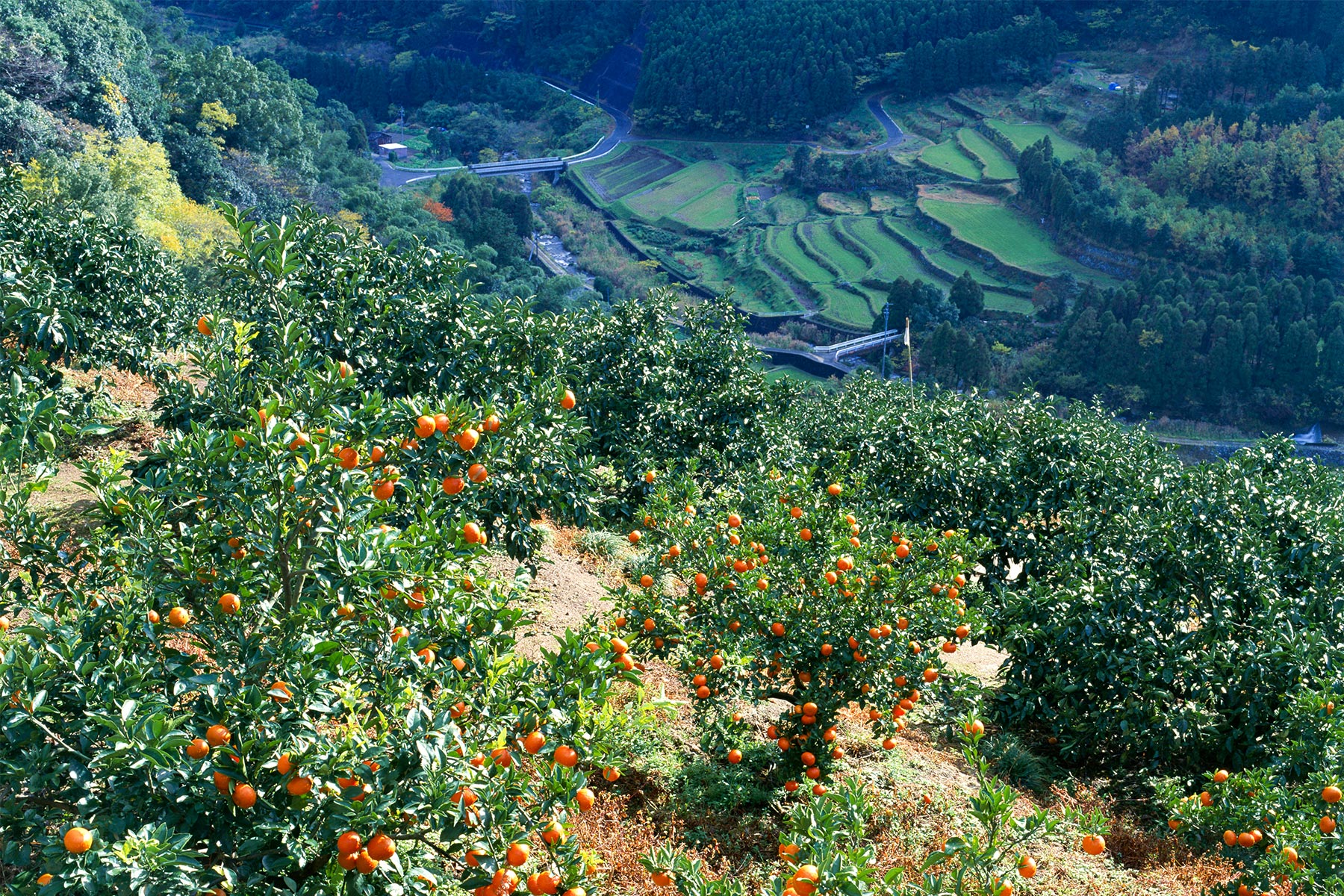
If farming in hilly and mountainous areas were to decline, it would not only make stable food production more difficult, but it would also impair the many functions such farming provides, including the preservation of diverse ecosystems and prevention of landslides. Kubota, as it strives to realize food production that is sustainable and stable, sees protecting agriculture in hilly and mountainous areas as its responsibility. Therefore, it is engaged in developing technologies aimed at reducing labor and effort.
The Concepts are Modular Design and Open Platform
Full-scale development of KATR for farming in hilly and mountainous areas began in 2021. The development team was led by Yukifumi Yamanaka of the Farm and Industrial Machinery R&D Department II, Farm and Industrial Machinery Research and Development Unit.
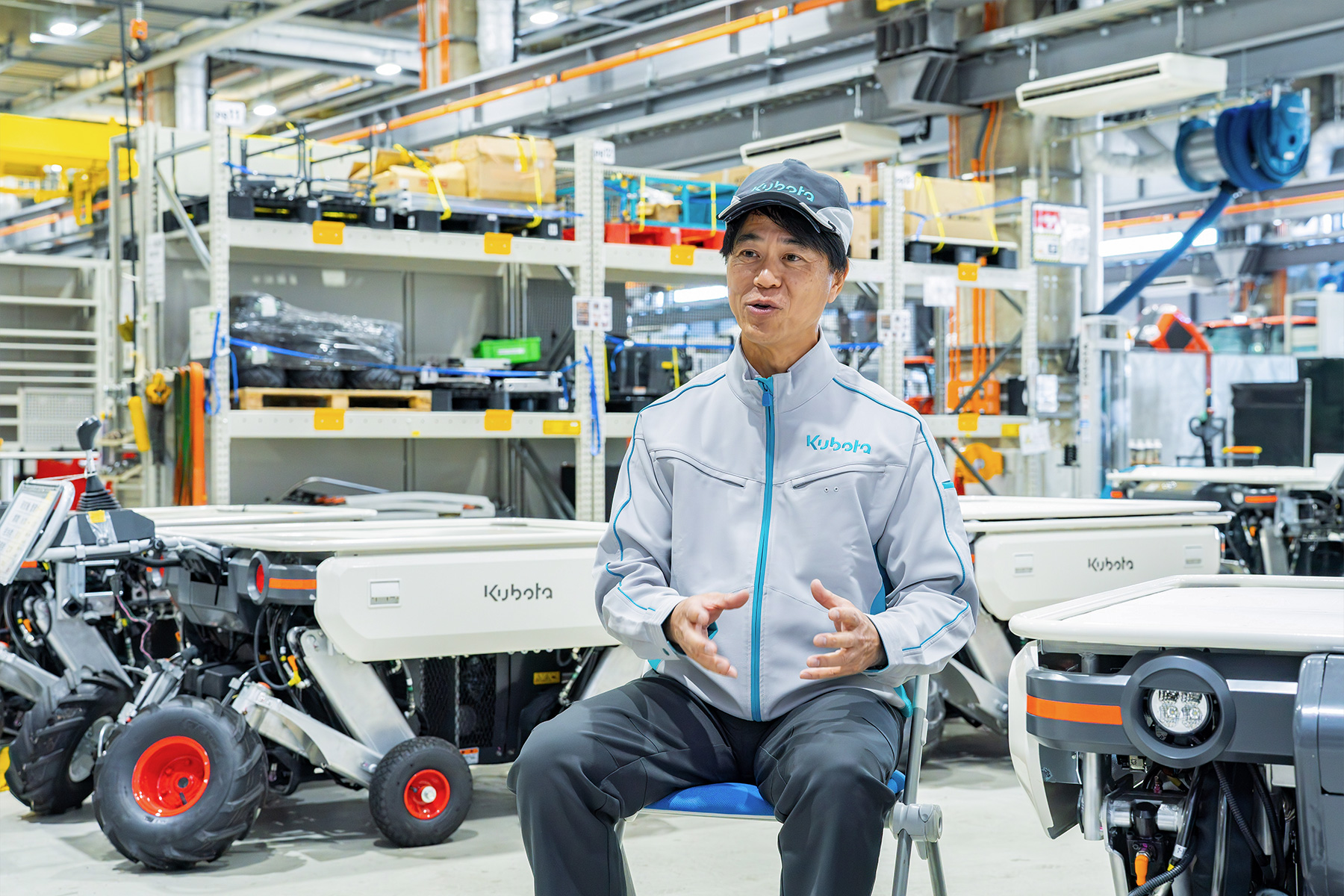
Yamanaka reflects on how the development was launched. “I believe Kubota has the best technologies in the world for rice paddies. But rice paddies are flat. I wanted to create a product that could appeal more to farmers in hilly and mountainous areas, which account for about 40% of Japan’s cultivated land area, so we set out to develop one.”
There are two concepts behind the development of KATR. The first is called modular design. KATR is composed of multiple modules or blocks that can be rearranged easily to fit the application. For example, if a user wishes to work across the ridges of a field, they can combine blocks to widen the tread (distance between wheels).
The other concept is called open platform. The aim is to build an interface that can be controlled remotely and provide a structure that enables easy connection of external modules, enabling a variety of tasks like a tractor.
Legacy Technologies Bring New Value to Farming in Hilly and Mountainous Areas
About KATR, the All-terrain Platform Vehicle
KATR is an all-terrain platform vehicle that can provide a stable platform even on slopes and rugged terrain. It controls its center of gravity by hydraulically extending and contracting its four legs, enabling it to transport loads of up to 240 kg without tilting its cargo deck, even on uneven terrain. It can be combined with various equipment, making it well-suited for a wide range of applications.
KATR can be operated intuitively using the onboard joystick or a remote controller. It is compact enough to fit on the bed of a commercial van or light truck, and its ability to make pivot turns allows it to work in small spaces that larger equipment cannot enter. In addition to the current conventional engine model, a more eco-friendly battery-powered electric version is also under development.
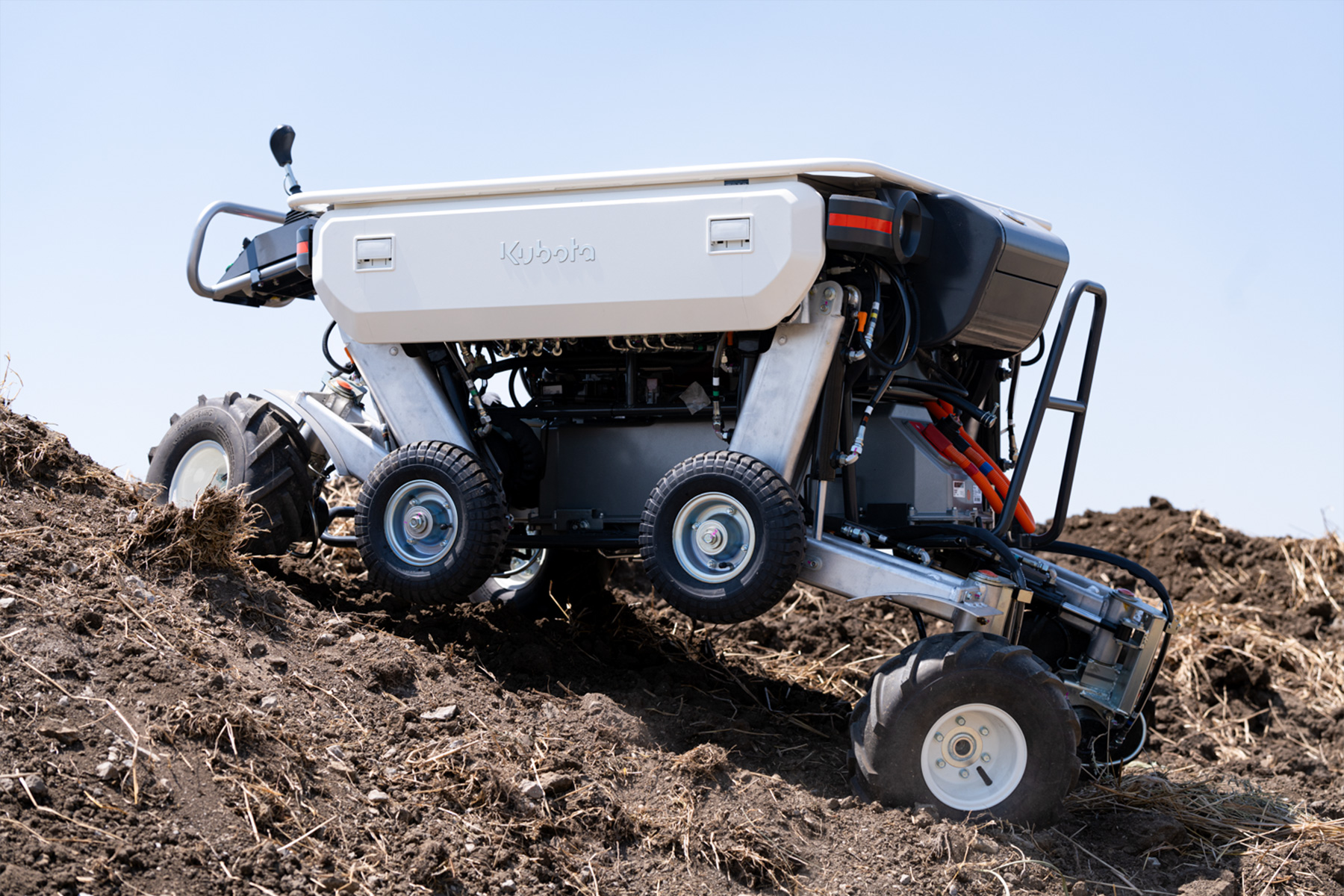
KATR’s Base is Supported by Kubota’s Advanced Hydraulic Control System
One area that cannot be overlooked in terms of solutions for farming in hilly and mountainous areas is off-road performance. “To use the system on slopes or uneven terrain requires power to run steadily,” says Yamanaka. “Therefore, off-road performance was the most important aspect.”
What makes KATR’s off-road performance possible is the legacy of hydraulic control technologies from Kubota’s long history of developing and manufacturing agricultural and construction machinery.
“Most of the vehicular solutions currently available are electric,” explains Yamanaka. “They suffer from lack of power on slopes and uneven terrain, and their operating time is extremely limited. KATR comes equipped with a dependable power supply and a steady transmission mechanism, so even with its small components, it delivers the power required to maneuver and do work on uneven terrain. And because these are the same technologies used in agricultural and construction machinery, KATR is designed for outstanding durability so that it can keep running even in harsh environments.”
Before development of KATR began, Kubota was involved in basic studies to explore new possibilities for hydraulic control systems. These technologies are a core component of Kubota's product manufacturing and have been honed over many years. These legacy technologies are now ready to create new value in the form of solutions to workforce and labor reduction issues faced by farmers in hilly and mountainous areas.
An Open Platform Focused on Workforce Reduction
KATR’s other key feature is its open platform. It is designed to enable various kinds of operations by connecting external devices and modules.
As a first step, basic research is being conducted on pest control with KATR. Manual pest control requires workers to wear goggles and gas masks when spraying chemicals, which can be extremely burdensome, especially in mid-summer when temperatures exceed 35 degrees Celsius. But if KATR could be operated from inside an air-conditioned vehicle to perform pest control, it would lead to tremendous labor savings.
This is just the first step toward the vision for this system. “We are initially working to provide pest control through KATR to reduce labor,” emphasizes Yamanaka. “But enabling farmers to practice agriculture that is profitable will require reducing the workforce, not labor. Ultimately, we hope to achieve workforce reductions by making it possible to perform pest control, pruning, and harvesting work only with KATR.”
This open platform is made possible by the robotics technologies honed by Kubota’s young engineers. KATR can be considered a fusion of Kubota’s long-standing legacy of hydraulic control technologies with new robotics technologies.
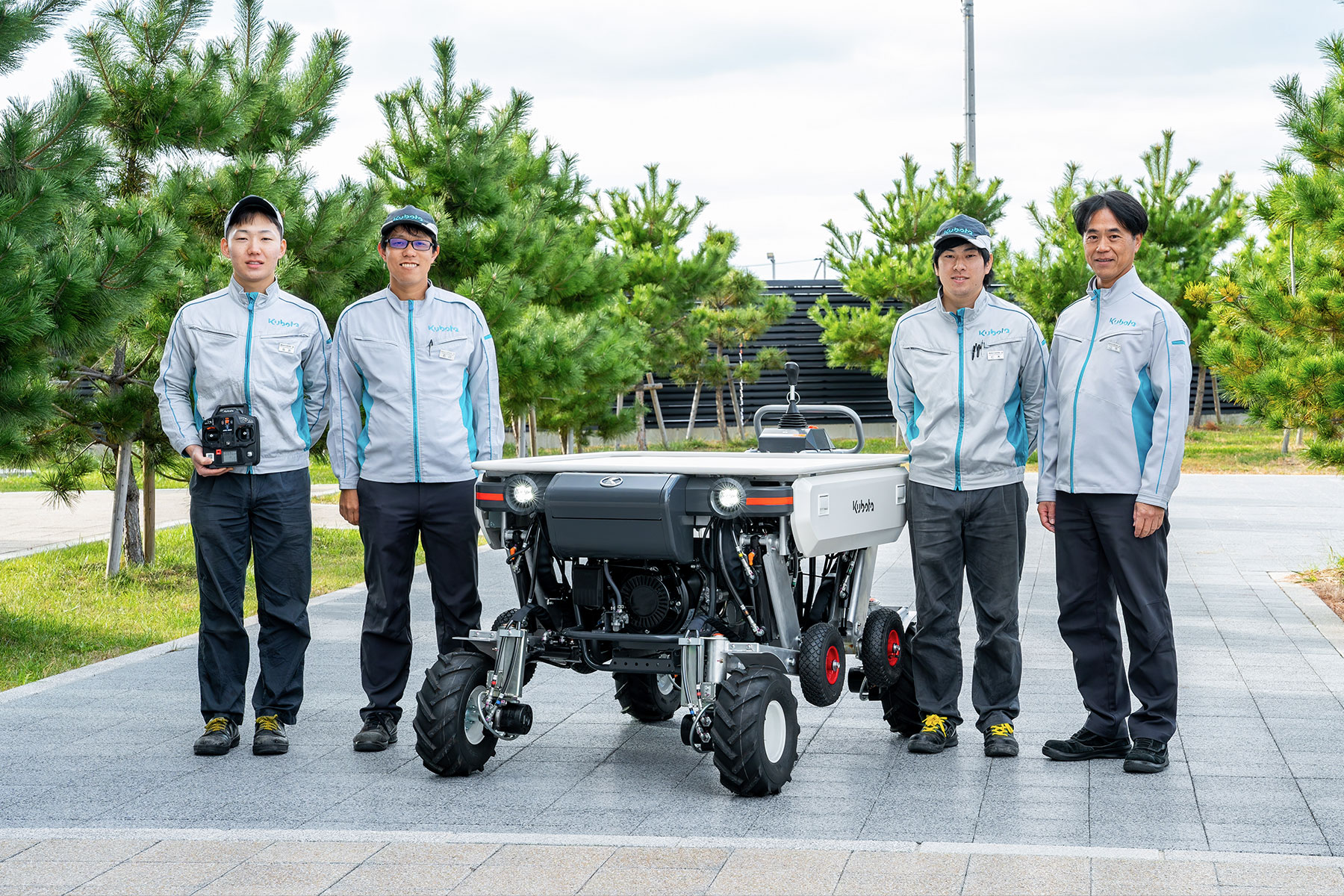
Striving to Create a Product that Assists in Hilly and Mountainous Areas
KATR development was launched with a small team of just five people. Yet this team shared one vision: “to create a machine that can support farming in hilly and mountainous areas and protect nature in neglected satoyama areas.” This became the driving force behind the project. Now, ten team members are working toward the same goal and preparing to bring the product to market.
With regards to winning Best of Innovation at CES® 2025, Yamanaka says, “It hasn’t really set in yet, but I’m delighted. Maybe I’ll finally realize it when I see KATR working in farmlands around the world.” He closed with his hopes for KATR’s development.
“We have proceeded with development of KATR with the hopes of providing a product that can fully utilize the fields in hilly and mountainous areas throughout the world. We envision it being used, for example, in American vineyards that employ eco-friendly methods, so we are developing an electric KATR that emits no exhaust gases. This may be a slight exaggeration, but it will increase rates of food self-sufficiency in Japan and around the world and will ensure food security. As a result of this, the nature in mountains regions and the diversity of their flora and fauna will be preserved. Our goal is to create products like this that contribute to Kubota’s ESG operations.”
An actual KATR will be exhibited at CES® 2025 along with other Kubota products and solutions. A report from CES® 2025 will also be posted in the future. Please keep watching for it.
- * The CES Innovation Awards are based upon descriptive materials submitted to the judges. CTA did not verify the accuracy of any submission or of any claims made and did not test the item to which the award was given.

